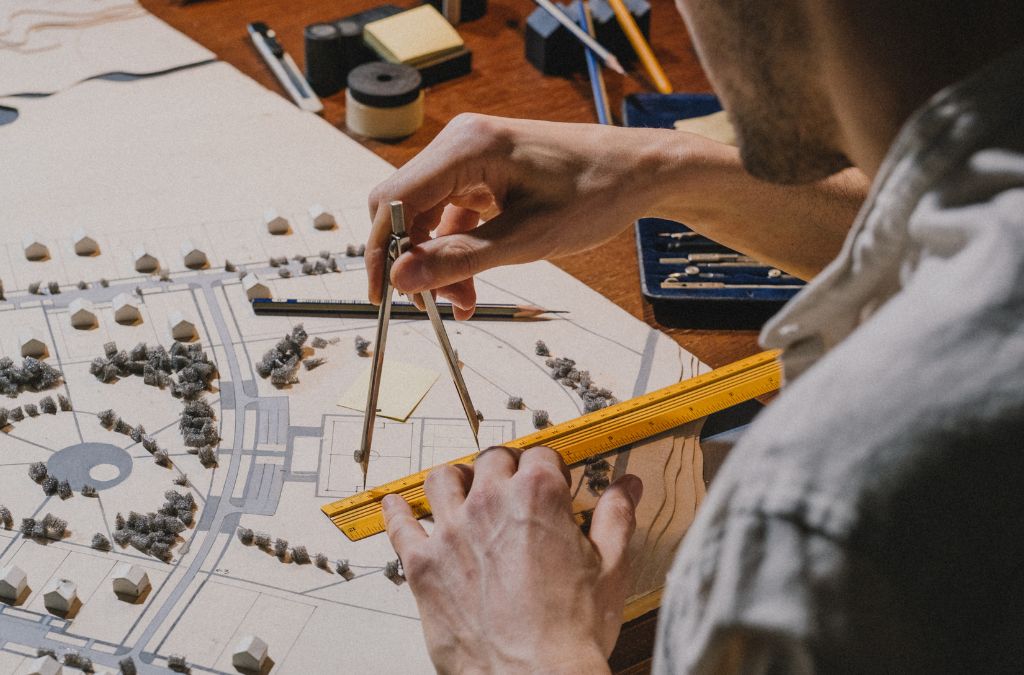-
Table of Contents
- Innovative Architects: Shaping the Future of Urban Spaces
- Redefining Urban Living
- Green Buildings and Sustainable Design
- Smart Cities and Technological Integration
- Innovative Architectural Techniques
- Parametric Design
- Modular Construction
- Adaptive Reuse
- Case Studies of Innovative Urban Projects
- Masdar City, UAE
- Songdo International Business District, South Korea
- The Future of Urban Spaces
Innovative Architects: Shaping the Future of Urban Spaces
Urban spaces are evolving rapidly, driven by the ingenuity and creativity of architects who are redefining the way we live, work, and interact. These visionaries are not just designing buildings; they are crafting environments that respond to the needs of modern society while anticipating future challenges. This article explores the groundbreaking work of innovative architects and their impact on urban spaces.
Redefining Urban Living
Architects are increasingly focusing on creating sustainable and livable urban environments. This shift is driven by the need to address issues such as climate change, population growth, and resource scarcity. By integrating green technologies and sustainable practices, architects are transforming cities into eco-friendly habitats.
Green Buildings and Sustainable Design
Green buildings are at the forefront of this transformation. These structures are designed to minimize environmental impact through energy efficiency, water conservation, and the use of sustainable materials. Examples include:
- The Edge in Amsterdam: Known as the world’s most sustainable office building, The Edge uses solar panels, rainwater harvesting, and smart technology to reduce its carbon footprint.
- One Central Park in Sydney: This residential tower features vertical gardens and a heliostat that reflects sunlight into shaded areas, enhancing natural light and reducing energy consumption.
Smart Cities and Technological Integration
Smart cities leverage technology to improve urban living. Architects play a crucial role in designing infrastructure that supports these advancements. Key features of smart cities include:
- IoT Integration: Internet of Things (IoT) devices monitor and manage resources such as energy, water, and waste, optimizing efficiency and reducing costs.
- Smart Transportation: Autonomous vehicles, smart traffic lights, and integrated public transport systems enhance mobility and reduce congestion.
Innovative Architectural Techniques
Architects are employing innovative techniques to create structures that are not only functional but also aesthetically pleasing. These techniques include parametric design, modular construction, and adaptive reuse.
Parametric Design
Parametric design uses algorithms to generate complex forms and structures. This approach allows architects to explore new geometries and create unique, customized designs. Notable examples include:
- Beijing National Stadium: Also known as the Bird’s Nest, this stadium’s intricate design was achieved through parametric modeling, resulting in a visually stunning and structurally sound building.
- Heydar Aliyev Center in Baku: Designed by Zaha Hadid, this cultural center features fluid, wave-like forms that were made possible through parametric design.
Modular Construction
Modular construction involves assembling buildings from pre-fabricated modules. This method offers several benefits, including reduced construction time, lower costs, and improved quality control. Examples include:
- CitizenM Hotels: This hotel chain uses modular construction to build high-quality, affordable accommodations quickly and efficiently.
- Urban Rigger in Copenhagen: This student housing project repurposes shipping containers into modular living units, providing sustainable and affordable housing.
Adaptive Reuse
Adaptive reuse involves repurposing existing structures for new functions. This approach preserves historical buildings while meeting contemporary needs. Examples include:
- Tate Modern in London: This former power station was transformed into a world-renowned art museum, blending industrial heritage with modern design.
- The High Line in New York City: An abandoned elevated railway was converted into a public park, creating a green oasis in the heart of the city.
Case Studies of Innovative Urban Projects
Several urban projects exemplify the innovative approaches architects are taking to shape the future of cities. These projects highlight the potential of architecture to create sustainable, livable, and dynamic urban spaces.
Masdar City, UAE
Masdar City is a planned city in Abu Dhabi designed to be one of the most sustainable cities in the world. Key features include:
- Renewable Energy: The city is powered by solar energy and other renewable sources, aiming for a zero-carbon footprint.
- Walkability: The city is designed to be pedestrian-friendly, with shaded walkways and a compact layout that reduces the need for cars.
Songdo International Business District, South Korea
Songdo is a smart city built from scratch on reclaimed land. It incorporates cutting-edge technology and sustainable practices, including:
- Ubiquitous Connectivity: The city features a comprehensive network of sensors and devices that monitor and manage everything from traffic to energy use.
- Green Spaces: Songdo boasts numerous parks and green areas, providing residents with ample recreational opportunities and improving air quality.
The Future of Urban Spaces
The future of urban spaces lies in the hands of innovative architects who are pushing the boundaries of design and technology. By embracing sustainability, smart technology, and creative design techniques, these architects are creating cities that are not only functional but also beautiful and resilient.
As urban populations continue to grow, the need for innovative architectural solutions will become increasingly important. The examples and case studies highlighted in this article demonstrate the potential of architecture to transform urban spaces and improve the quality of life for residents. By continuing to explore new ideas and approaches, architects will play a pivotal role in shaping the cities of tomorrow.
